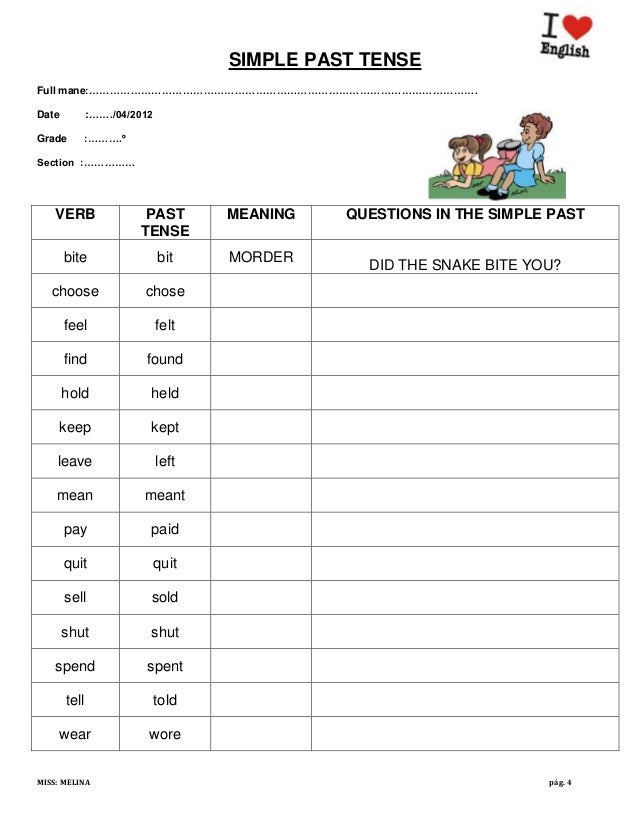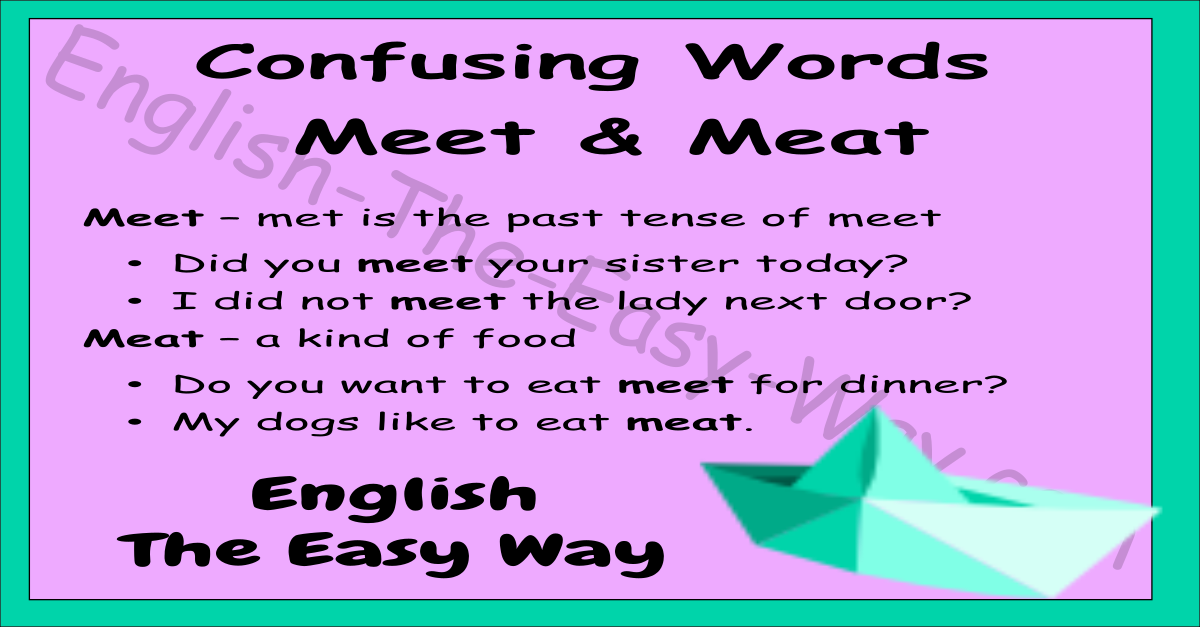
To master the accurate pronunciation of this verb, refer to the online Oxford Dictionary in British and American English styles. Present vs Past – YouTubeĪ total of 12 different verb tenses of “send” – do you feel interested? Tab this link to dive into the differences between the send verb forms used in passive and active voices.
#MEET PAST TENSE MEANING HOW TO#
Let a far-out short video clarify how to use “sent” and “sent” appropriately:Įasy Tricks to Correctly use Send and Sent! English Grammar Lessons with examples. Let GrammarWiki walk you through the verb construction by seeing the table below. Send past participle is lookalike send in past tense, interestingly. The difference lies in the last character. “Send” is an irregular verb with the base form S-E-N-D in the present tense and S-E-N-T in the past and past participle. While the past tense of “arise” converted from its base verb sounds easy, you may pose the question: can the same be done with “send”?

I’m afraid I can’t really recommend particular learning materials to learn more about this grammar point, but I suggest having a look for advanced-level grammar books since this is quite a specific point and it may not be covered in general textbooks. (emphasises the completeness of the first action, before the second one happened)

Of course, how connected actions are is subjective, so sometimes both structures are possible, depending on the speaker’s intended meaning.

Action 2 follows very shortly after action 1. “When” + past simple action 1 + past simple action 2 shows actions that are connected in the sense that action 1 leads smoothly into action 2. We can also use the past simple to refer to the present or future in hypotheses (when we imagine something). Level: intermediate Past simple and hypotheses Past simple negatives 1 GapFillDragAndDrop_MTYzMjY= Past simple negatives 2 GapFillTyping_MTYzMjc= We didn't get home until very late last night. We use didn't ( did not) to make negativeswith the past simple: Who wrote Don Quixote? Past simple questions 1 ReorderingHorizontal_MTYzMjQ= Past simple questions 2 GapFillTyping_MTYzMjU= We use did to make questions with the past simple:ĭid she play tennis when she was younger?īut questions with who often don't use did: Past simple 1 GapFillTyping_MTYzMjI= Past simple 2 GapFillTyping_MTYzMjM= Past simple questions and negatives we often use expressions with agowith the past simple:.She played a lot of tennis when she was younger. something that was true for some time in the past:.They always enjoyed visiting their friends. When I was a boy, I walked a mile to school every day. something that happened several times in the past:.

something that happened once in the past:.Here are the most common irregular verbs in English, with their past tense forms: Base form With most verbs, the past tense is formed by adding –ed: call edīut there are a lot of irregular past tense forms in English.


 0 kommentar(er)
0 kommentar(er)
